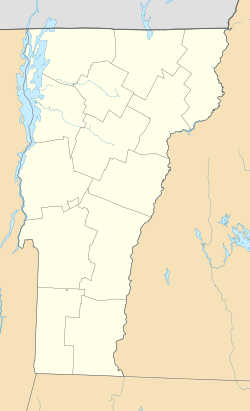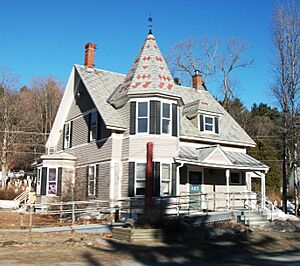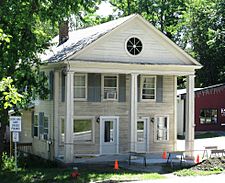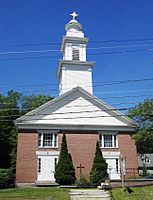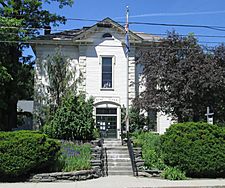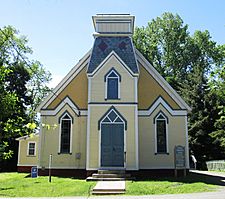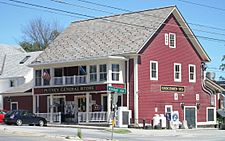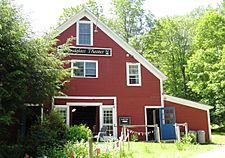Putney Village Historic District facts for kids
Quick facts for kids |
|
|
Putney Village Historic District
|
|
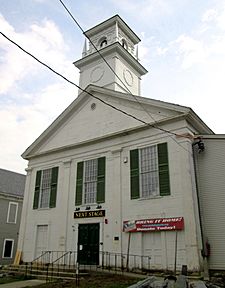
The former Putney Federated Church, built in 1841, now the Next Stage Arts Project and the headquarters of the Putney Historical Society (2016)
|
|
| Location | Westminster W Rd., US 5, Christian Sq., Old US 5, and Depot Rd., Putney, Vermont |
|---|---|
| Area | 140 acres (57 ha) |
| Built | 1753 |
| Architectural style | Greek Revival, Late Victorian, Federal |
| NRHP reference No. | 86000324 |
| Added to NRHP | February 20, 1986 |
The Putney Village Historic District is a special area in the heart of Putney, Vermont. It's like a time capsule, showing how the village looked many years ago. This district includes many old buildings that were built a long time ago. Most of these buildings are from the late 1700s and early 1800s. They show off styles like Federal and Greek Revival architecture. The district was added to the National Register of Historic Places in 1986. This means it's recognized as an important historical place in the United States.
Exploring Putney's Past
The town of Putney was officially started in 1753 by Benning Wentworth. He was the colonial governor of New Hampshire at the time. However, many people didn't start settling here until after the French and Indian War ended in 1760.
How the Village Grew
The village of Putney grew on a large flat area next to the Connecticut River. A small waterfall on Sacketts Brook was very important. It provided water power for the first mills in the area. This is why the main village formed around that spot.
Putney didn't have many large waterfalls. Because of this, it wasn't a big center for factories during the Industrial Revolution. This happened in the mid-1800s. So, Putney stayed mostly a quiet, rural town. The buildings in the village mostly show the Federal and Greek Revival styles. These styles were popular when the village was growing the most, from the late 1700s to the mid-1800s.
What You'll See in the District
The historic district covers most of the main village of Putney today. The main roads that run through it are United States Route 5, Kimball Hill, and Westminster West Road. It stretches from Sand Hill Road in the north to the Interstate 91 highway exit in the south.
The district also includes buildings on nearby smaller roads. This includes all of Old Depot Road and part of Old Route 5. Most homes in the district are in the Greek Revival style. There are also many older Federal-style buildings. You can also find a few newer homes, like some unique Queen Anne houses.
There are two churches in the district. Both are Greek Revival buildings from the 1840s. One was the Methodist Church, and the other was the Congregationalist Church. An older chapel from 1841, used by a religious group, is no longer standing. That building burned down in 1970. The town hall, which is the main government building, was built in 1871. It shows the Italianate style of architecture. The large Central School building, built in 1906, is in the Colonial Revival style.
Images for kids


